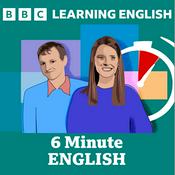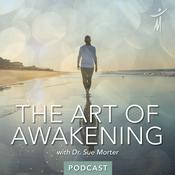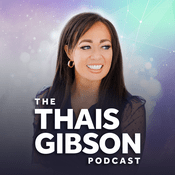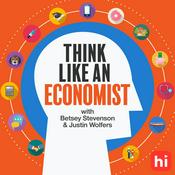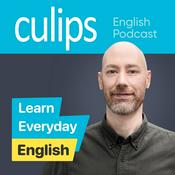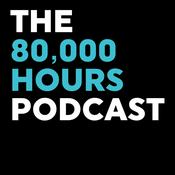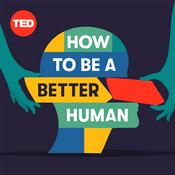146 episodes

Best of 2025: Oracle Fusion Cloud Applications Foundations Training & Certifications
16/12/2025 | 11 mins.
In this episode of the Oracle University Podcast, hosts Lois Houston and Nikita Abraham dive into Oracle Fusion Cloud Applications and the new courses and certifications on offer. They are joined by Oracle Fusion Apps experts Patrick McBride and Bill Lawson who introduce the concept of Oracle Modern Best Practice (OMBP), explaining how it helps organizations maximize results by mapping Fusion Application features to daily business processes. They also discuss how the new courses educate learners on OMBP and its role in improving Fusion Cloud Apps implementations. OMBP: https://www.oracle.com/applications/modern-best-practice/ Oracle University Learning Community: https://education.oracle.com/ou-community LinkedIn: https://www.linkedin.com/showcase/oracle-university/ X: https://x.com/Oracle_Edu Special thanks to Arijit Ghosh, David Wright, Kris-Ann Nansen, Radhika Banka, and the OU Studio Team for helping us create this episode. ----------------------------------------------------- Episode Transcript: 00:00 Welcome to the Oracle University Podcast, the first stop on your cloud journey. During this series of informative podcasts, we'll bring you foundational training on the most popular Oracle technologies. Let's get started! 00:25 Nikita: Hello and welcome to the Oracle University Podcast! I'm Nikita Abraham, Team Lead of Editorial Services with Oracle University, and with me is Lois Houston, Director of Communications and Adoption with Customer Success Services. Lois: Hi everyone! Thanks for joining us for this Best of 2025 series, where we're playing you four of our most popular episodes of the year. Nikita: Today's episode is #3 of 4 and is a throwback to a conversation with our friends and Oracle Fusion Apps experts Patrick McBride and Bill Lawson. We chatted with them about the latest courses and certifications available for Oracle Fusion Cloud Applications, featuring Oracle Modern Best Practice and the Oracle Cloud Success Navigator. 01:08 Lois: We kicked things off by asking Patrick to help us understand what Oracle Modern Best Practice is, and the reasons behind its creation. Patrick: So, modern best practices are more than just a business process. They're really about translating features and technology into actionable capabilities in our product. So, we've created these by curating industry leading best practices we've collected from our customers over the years. And ensure that the most modern technologies that we've built into the Fusion Application stack are represented inside of those business processes. Our goal is really to help you as customers improve your business operations by easily finding and applying those technologies to what you do every day. 01:53 Nikita: So, by understanding this modern best practice and the technology that enables it, you're really unlocking the full potential of Fusion Apps. Patrick: Absolutely. So, the goal is that modern best practice make it really easy for customers, implementers, partners, to see the opportunity and take action. 02:13 Lois: That's great. OK, so, let's talk about implementations, Patrick. How do Oracle Modern Best Practice support customers throughout the lifecycle of an Oracle Fusion Cloud implementation? Patrick: What we found during many implementers' journey with taking our solution and trying to apply it with customers is that customers come in with a long list of capabilities that they're asking us to replicate. What they've always done in the past. And what modern best practice is trying to do is help customers to reimage the art of the possible…what's possible with Fusion by taking advantage of innovative features like AI, like IoT, like, you know, all of the other solutions that we built in to help you automate your processes to help you get the most out of the solution using the latest and greatest technology. So, if you're an implementer, there's a number of ways a modern best practice can help during an implementation. First is that reimagine exercise where you can help the customer see what's possible. And how we can do it in a better way. I think more importantly though, as you go through your implementation, many customers aren't able to get everything done by the time they have to go live. They have a list of things they've deferred and modern best practices really establishes itself as a road map for success, so you can go back to it at the completion and see what's left for the opportunity to take advantage of and you can use it to track kind of the continuous innovation that Oracle delivers with every release and see what's changed with that business process and how can I get the most out of it. 03:43 Nikita: Thanks, Patrick. That's a great primer on OMBP that I'm sure everyone will find very helpful. Patrick: Thanks, Niki. We want our customers to understand the value of modern best practices so they can really maximize their investment in Oracle technology today and in the future as we continue to innovate. 03:59 Lois: Right. And the way we're doing that is through new training and certifications that are closely aligned with OMBP. Bill, what can you tell us about this? Bill: Yes, sure. So, the new Oracle Fusion Applications Foundations training program is designed to help partners and customers understand Oracle Modern Best Practice and how they improve the entire implementation journey with Fusion Cloud Applications. As a learner, you will understand how to adhere to these practices and how they promise a greater level of success and customer satisfaction. So, whether you're designing, or implementing, or going live, you'll be able to get it right on day one. So, like Patrick was saying, these OMBPs are reimagined, industry-standard business processes built into Fusion Applications. So, you'll also discover how technologies like AI, Mobile, and Analytics help you automate tasks and make smarter decisions. You'll see how data flows between processes and get tips for successful go-lives. So, the training we're offering includes product demonstrations, key metrics, and design considerations to give you a solid understanding of modern best practice. It also introduces you to Oracle Cloud Success Navigator and how it can be leveraged and relied upon as a trusted source to guide you through every step of your cloud journey, so from planning, designing, and implementation, to user acceptance testing and post-go-live innovations with each quarterly new release of Fusion Applications and those new features. And then, the training also prepares you for Oracle Cloud Applications Foundations certifications. 05:31 Nikita: Which applications does the training focus on, Bill? Bill: Sure, so the training focuses on four key pillars of Fusion Apps and the associated OMBP with them. For Human Capital Management, we cover Human Resources and Talent Management. For Enterprise Resource Planning, it's all about Financials, Project Management, and Risk Management. In Supply Chain Management, you'll look at Supply Chain, Manufacturing, Inventory, Procurement, and more. And for Customer Experience, we'll focus on Marketing, Sales, and Service. 05:59 Lois: That's great, Bill. Now, who is the training and certification for? Bill: That's a great question. So, it's really for anyone who wants to get the most out of Oracle Fusion Cloud Applications. It doesn't matter if you're an experienced professional or someone new to Fusion Apps, this is a great place to start. It's even recommended for professionals with experience in implementing other applications, like on-premise products. So, the goal is to give you a solid foundation in Oracle Modern Best Practice and show you how to use them to improve your implementation approach. We want to make it easy for anyone, whether you're an implementer, a global process owner, or an IT team employee, to identify every way Fusion Applications can improve your organization. So, if you're new to Fusion Apps, you'll get a comprehensive overview of Oracle Fusion Applications and how to use OMBP to improve business operations. If you're already certified in Oracle Cloud Applications and have years of experience, you'll still benefit from learning how OMBP fits into your work. If you're an experienced Fusion consultant who is new to Oracle Modern Best Practice processes, this is a good place to begin and learn how to apply them and the latest technology enablers during implementations. And, lastly, if you're an on-premise or you have non-Fusion consultant skills looking to upskill to Fusion, this is a great way to begin acquiring the knowledge and skills needed to transition to Fusion and migrate your existing expertise. 07:29 Have you mastered the basics of AI? Are you ready to take your skills to the next level? Unlock the potential of advanced AI with our OCI Generative AI Professional course and certification that covers topics like Large Language Models, the OCI Generative AI Service, and building Q&A chatbots for real-world applications. Head over to mylearn.oracle.com and find out more. 07:58 Nikita: Welcome back! Bill, how long is it going to take me to complete this training program? Bill: So, we wanted to make this program detailed enough so our learners find it valuable, obviously. But at the same time, we didn't want to make it too long. So, each course is approximately 5 hours or more, and provides folks with all the requisite knowledge they need to get started with Oracle Modern Best Practice and Fusion Applications. 08:22 Lois: Bill, is there anything that I need to know before I take this course? Are there any prerequisites? Bill: No, Lois, there are no prerequisites. Like I was saying, whether you're fresh out of college or a seasoned professional, this is a great place to start your journey into Fusion Apps and Oracle Modern Best Practice. 08:37 Nikita: That's great, you know, that there are no barriers to starting. Now, Bill, what can you tell us about the certification that goes along with this new program? Bill: The best part, Niki, is that it's free. In fact, the training is also free. We have four courses and corresponding Foundation Associate–level certifications for Human Capital Management, Enterprise Resource Planning, Supply Chain Management, and Customer Experience. So, completing the training prepares you for an hour-long exam with 25 questions. It's a pretty straightforward way to validate your expertise in Oracle Modern Best Practice and Fusion Apps implementation considerations. 09:11 Nikita: Ok. Say I take this course and certification. What can I do next? Where should my learning journey take me? Bill: So, you're building knowledge and expertise with Fusion Applications, correct? So, once you take this training and certification, I recommend that you identify a product area you want to specialize in. So, if you take the Foundations training for HCM, you can dive deeper into specialized paths focused on implementing Human Resources, Workforce Management, Talent Management, or Payroll applications, for example. The same goes for other product areas. If you finish the certification for Foundations in ERP, you may choose to specialize in Finance or Project Management and get your professional certifications there as your next step. So, once you have this foundational knowledge, moving on to advanced learning in these areas becomes much easier. We offer various learning paths with associated professional-level certifications to deepen your knowledge and expertise in Oracle Fusion Cloud Applications. So, you can learn more about these courses by visiting oracle.com/education/training/ to find out more of what Oracle University has to offer. 10:14 Lois: Right. I love that we have a clear path from foundational-level training to more advanced levels. So, as your skills grow, we've got the resources to help you move forward. Nikita: That's right, Lois. Thanks for walking us through all this, Patrick and Bill. We really appreciate you taking the time to join us on the podcast. Bill: Yeah, it's always a pleasure to join you on the podcast. Thank you very much. Patrick: Oh, thanks for having me, Lois. Happy to be here. Nikita: We hope you enjoyed that conversation. Join us next week for another throwback episode. Until then, this is Nikita Abraham... Lois: And Lois Houston, signing off! 10:47 That's all for this episode of the Oracle University Podcast. If you enjoyed listening, please click Subscribe to get all the latest episodes. We'd also love it if you would take a moment to rate and review us on your podcast app. See you again on the next episode of the Oracle University Podcast.

Best of 2025: What is Multicloud?
09/12/2025 | 11 mins.
This week, hosts Lois Houston and Nikita Abraham are shining a light on multicloud, a game-changing strategy involving the use of multiple cloud service providers. Joined by Senior Manager of CSS OU Cloud Delivery Samvit Mishra, they discuss why multicloud is becoming essential for businesses, offering freedom from vendor lock-in and the ability to cherry-pick the best services. They also talk about Oracle's pioneering role in multicloud and its partnerships with Microsoft Azure, Google Cloud, and Amazon Web Services. Oracle Cloud Infrastructure Multicloud Architect Professional: https://mylearn.oracle.com/ou/course/oracle-cloud-infrastructure-multicloud-architect-professional-2025-/144474 Oracle University Learning Community: https://education.oracle.com/ou-community LinkedIn: https://www.linkedin.com/showcase/oracle-university/ X: https://x.com/Oracle_Edu Special thanks to Arijit Ghosh, David Wright, Kris-Ann Nansen, and the OU Studio Team for helping us create this episode. ------------------------------------------------------ Episode Transcript: 00:00 Welcome to the Oracle University Podcast, the first stop on your cloud journey. During this series of informative podcasts, we'll bring you foundational training on the most popular Oracle technologies. Let's get started! 00:25 Lois: Welcome to the Oracle University Podcast! I'm Lois Houston, Director of Communications and Adoption with Customer Success Services, and with me is Nikita Abraham, Team Lead: Editorial Services with Oracle University. Nikita: Hi everyone! You're listening to our Best of 2025 series, where over the next few weeks, we're revisiting four of our most popular episodes of the year. Lois: Today is #2 of 4, and we're throwing it back to an episode with Senior Manager of CSS OU Cloud Delivery Samvit Mishra. This episode was all about shining a light on multicloud, a game-changing strategy involving the use of multiple cloud service providers. 01:07 Nikita: That's right, Lois. Oracle has been an early adopter of multicloud and a pioneer in multicloud services. So, we began that conversation by asking Samvit to explain what multicloud is and why someone would need more than one cloud provider. Samvit: Multicloud is a very simple, basic concept. It is the coordinated use of cloud services from more than one cloud service provider. 01:30 Nikita: But why would someone want to use more than one cloud service provider? Samvit: There are many reasons why a customer might want to leverage two or more cloud service providers. First, it addresses the very real concern of mitigating or avoiding vendor lock-in. By using multiple providers, companies can avoid being tied down to one vendor and maintain their flexibility. 01:53 Lois: That's like not putting all your eggs in one basket, so to speak. Samvit: Exactly. Another reason is that customers want the best of breed. What that means is basically leveraging or utilizing the best product from one cloud service provider and pairing it against the best product from another cloud service provider. Getting a solution out of the combined products…out of the coordinated use of those services. 02:22 Nikita: So, it sounds like multicloud is becoming the new normal. And as we were saying before, Oracle was a pioneer in this space. But why did we embrace multicloud so wholeheartedly? Samvit: We recognized that our customers were already moving in this direction. Independent studies from Flexera found that 89% of the subjects of the study used multicloud. And we conducted our own study and came to similar numbers. Over 90% of our customers use two or more cloud service providers. HashiCorp, the big infrastructure as code company, came to similar numbers as well, 94%. They basically asked companies if multicloud helped them advance their business goals. And 94% said yes. And all this is very recent data. 03:13 Lois: Can you give us the backstory of Oracle's entry into the multicloud space? Samvit: Sure. So back in 2019, Oracle and Microsoft Azure joined forces and announced the interconnect service between Oracle Cloud Infrastructure and Microsoft Azure. The interconnect was between Oracle's FastConnect and Microsoft Azure's ExpressRoute. This was a big step, as it allowed for a direct connection between the two providers without needing a third-party. And now we have several of our data centers interconnected already. So, out of the 48 regions, 12 of them are already interconnected. And more are coming. And you can very easily configure the interconnect. This interconnectivity guarantees low latency, high throughput, and predictable performance. And also, on the OCI side, there are no egress or ingress charges for your data. There's also a product called Oracle Database@Azure, where Oracle and Microsoft deliver Oracle Database services in Microsoft Azure data centers. 04:20 Lois: That's exciting! And what are the benefits of this product? Samvit: The main advantage is the co-location. Being co-located with the Microsoft Azure data center offers you native integration between Azure and OCI resources. No manual configuration of a private interconnect between the two providers is needed. You're going to get microsecond latency between your applications and the Oracle Database. The OCI-native Exadata Database Service is available on Oracle Database@Azure. This enables you to get the highest level of Oracle Database performance, scalability, security, and availability. And your tech support can be provided either from Microsoft or from Oracle. 05:11 AI is being used in nearly every industry…healthcare, manufacturing, retail, customer service, transportation, agriculture, you name it! And it's only going to get more prevalent and transformational in the future. It's no wonder that AI skills are the most sought-after by employers. If you're ready to dive in to AI, check out the OCI AI Foundations training and certification that's available for free! It's the perfect starting point to build your AI knowledge. So, get going! Head on over to mylearn.oracle.com to find out more. 05:51 Nikita: Welcome back. Samvit, there have been some new multicloud milestones from OCI, right? Can you tell us about them? Samvit: That's right, Niki. I am thrilled to share the latest news on Oracle's multicloud partnerships. We now have agreements with Microsoft Azure, Google Cloud, and Amazon Web Services. So, as we were discussing earlier, with Azure, we have the Oracle Interconnect for Azure and Oracle Database@Azure. Now, with Google Cloud, we have the Oracle Interconnect for Google Cloud. And it is very similar to the Oracle Interconnect for Azure. With Google Cloud, we have physically interconnected data centers and they provide a sub-2 millisecond latency private interconnection. So, you can come in and provision virtual circuits going from Oracle FastConnect to Google Cloud Interconnect. And the best thing is that there are no egress or ingress charges for your data. The way it is structured is you have your Oracle Cloud Infrastructure on one side, with your virtual cloud network, your subnets, and your resources. And on the other side, you have your Google Cloud router with your virtual private cloud subnet and your resources interconnecting. You initiate the connectivity on the Google Cloud side, retrieve the service key and provide that service key to Oracle Cloud Infrastructure, and complete the interconnection on the OCI side. So, for example, our US East Ashburn interconnect will match with us-east4 on the Google Cloud side. 07:29 Lois: Now, wasn't the other major announcement Oracle Database@Google Cloud? Tell us more about that, please. Samvit: With Oracle Database@Google Cloud, you can run your applications on Google Cloud and the database inside the Google Cloud platform. That's the Oracle Cloud Infrastructure database co-located in Google Cloud platform data centers. It allows you to run native integration between GCP and OCI resources with no manual configuration of private interconnect between these two cloud service providers. That means no FastConnect, no Interconnect because, again, the database is located in the Google Cloud data center. And you're going to get microsecond latency and the OCI native Exadata Database Service. So, you're going to gain the highest level of Oracle Database performance, scalability, security, and availability. 08:25 Lois: And how is the tech support managed? Samvit: The technical support is a collaboration between Google Cloud and Oracle Cloud Infrastructure. That means you can either have the technical support provided to completion by Google Cloud or by Oracle. One of us will provide you with an end-to-end solution. 08:43 Nikita: During CloudWorld last year, we also announced Oracle Database@AWS, right? Samvit: Yes, Niki. That's where Oracle and Amazon Web Services deliver the Oracle Database service on Oracle Cloud Infrastructure in your AWS data center. This will provide you with native integration between AWS and OCI resources, with no manual configuration of private interconnect between AWS and OCI. And you're getting microsecond latency with the OCI-native Exadata Database Service. And again, as with Oracle Database@Google Cloud and Oracle Database@Azure, you're gaining the highest level of Oracle Database performance, scalability, security, and availability. And the technical support is provided by either AWS or Oracle all the way to completion. Now, Oracle Database@AWS is currently available in limited preview, with broader availability in the coming months as it expands to new regions to meet the needs of our customers. 09:49 Lois: That's great. Now, how does Oracle fare when it comes to pricing, especially compared to our major cloud competitors? Samvit: Our pricing is pretty consistent. You'll see that in all cases across the world, we have the less expensive solution for you and the highest performance as well. 10:06 Nikita: Let's move on to some use cases, Samvit. How might a company use the multicloud setup? Samvit: Let's start with the split-stack architecture between Oracle Cloud Infrastructure and Microsoft Azure. Like I was saying earlier, this partnership dates back to 2019. And basically, we eliminated the FastConnect partner from the middle. And this will provide you with high throughput, low latency, and very predictable performance, all of this on highly available links. These links are redundant, ensuring business continuity between OCI and Azure. And you can have your database on the OCI side and your application on Microsoft Azure side or the other way around. You can have SQL Server on Azure and the application running on Oracle Cloud Infrastructure. And this is very easy to configure. 10:55 Lois: It really sounds like Oracle is at the forefront of the multicloud revolution. Thanks so much, Samvit, for shedding light on this exciting topic. Samvit: It was my pleasure. Nikita: That's a wrap for today. To learn more about what we discussed, head over to mylearn.oracle.com and search for the Oracle Cloud Infrastructure Multicloud Architect Professional course. Lois: We hope you enjoyed that conversation. Join us next week for another throwback episode. Until then, this is Lois Houston... Nikita: And Nikita Abraham, signing off! 11:26 That's all for this episode of the Oracle University Podcast. If you enjoyed listening, please click Subscribe to get all the latest episodes. We'd also love it if you would take a moment to rate and review us on your podcast app. See you again on the next episode of the Oracle University Podcast.

Best of 2025: Introduction to MySQL
02/12/2025 | 26 mins.
Join hosts Lois Houston and Nikita Abraham as they explore the world of MySQL 8.4. Together with Perside Foster, a MySQL Principal Solution Engineer, they break down the fundamentals of MySQL, its wide range of applications, and why it's so popular among developers and database administrators. This episode also covers key topics like licensing options, support services, and the various tools, features, and plugins available in MySQL Enterprise Edition. MySQL 8.4 Essentials: https://mylearn.oracle.com/ou/course/mysql-84-essentials/141332/226362 Oracle University Learning Community: https://education.oracle.com/ou-community LinkedIn: https://www.linkedin.com/showcase/oracle-university/ X: https://x.com/Oracle_Edu Special thanks to Arijit Ghosh, David Wright, Kris-Ann Nansen, Radhika Banka, and the OU Studio Team for helping us create this episode. ----------------------------------------------------- Episode Transcript: 00:00 Welcome to the Oracle University Podcast, the first stop on your cloud journey. During this series of informative podcasts, we'll bring you foundational training on the most popular Oracle technologies. Let's get started! 00:25 Nikita: Hello and welcome to the Oracle University Podcast! I'm Nikita Abraham, Team Lead of Editorial Services with Oracle University, and with me is Lois Houston, Director of Communications and Adoption with Customer Success Services. Lois: Hi there! If you've been following along with us, you'll know we've had some really interesting seasons this year. We covered MySQL, Multicloud, APEX, GoldenGate, Artificial Intelligence, and Cloud Tech. Nikita: And we've had some pretty awesome special guests too. Do go back and check out those episodes if any of these topics interest you. Lois: As we close out the year, we thought this would be a good time to revisit some of our best episodes. So over the next few weeks, you'll be able to listen to four of our most popular episodes of the year. 01:12 Nikita: Right, this is the best of the best according to you our listeners. Today's episode is #1 of 4 and is a throwback to a discussion with MySQL Principal Solution Engineer Perside Foster on the Oracle MySQL ecosystem and its various components. We began by asking Perside to explain what MySQL is and why it's so widely used. So, let's get to it! Perside: MySQL is a relational database management system that organizes data into structured tables, rows, and columns for efficient programming and data management. MySQL is transactional by nature. When storing and managing data, actions such as selecting, inserting, updating, or deleting are required. MySQL groups these actions into a transaction. The transaction is saved only if every part completes successfully. 02:13 Lois: Now, how does MySQL work under the hood? Perside: MySQL is a high-performance database that uses its default storage engine, known as InnoDB. InnoDB helps MySQL handle complex operations and large data volumes smoothly. 02:33 Nikita: For the unversed, what are some day-to-day applications of MySQL? How is it used in the real world? Perside: MySQL works well with online transaction processing workloads. It handles transactions quickly and manages large volumes of transaction at once. OLTP, with low latency and high throughput, makes MySQL ideal for high-speed environments like banking or online shopping. MySQL not only stores data but also replicates it from a main server to several replicas. 03:14 Nikita: That's impressive! And what are the benefits of using MySQL? Perside: It improves data availability and load balancing, which is crucial for businesses that need up-to-date information. MySQL replication supports read scale-out by distributing queries across servers, which increases high availability. MySQL is the most popular database on the web. 03:44 Lois: And why is that? What makes it so popular? What sets it apart from the other database management systems? Perside: First, it is a relational database management system that supports SQL. It also works as a document store, enabling the creation of both SQL and NoSQL applications without the need for separate NoSQL databases. Additionally, MySQL offers advanced security features to protect data integrity and privacy. It also uses tablespaces for better disk space management. This gives database administrators total control over their data storage. MySQL is simple, solid in its reliability, and secure by design. It is easy to use and ideal for both beginners and professionals. MySQL is proven at scale by efficiently handling large data volumes and high transaction rates. MySQL is also open source. This means anyone can download and use it for free. Users can modify the MySQL software to meet their needs. However, it is governed by the GNU General Public License, or GPL. GPL outlines specific rules for its use. MySQL offers two major editions. For developers and small teams, the Community Edition is available for free and includes all of the core features needed. For large enterprises, the Commercial Edition provides advanced features, management tools, and dedicated technical support. 05:42 Nikita: Ok. Let's shift focus to licensing. Who is it useful for? Perside: MySQL licensing is essential for independent software vendors. They're called ISVs. And original manufacturers, they're called OEMs. This is because these companies often incorporate MySQL code into their software products or hardware system to boost the functionality and performance of their product. MySQL licensing is equally important for value-added resellers. We call those VARs. And also, it's important for other distributors. These groups bundle MySQL with other commercially licensed software to sell as part of their product offering. The GPL v.2 license might suit Open Source projects that distribute their products under that license. 06:46 Lois: But what if some independent software vendors, original manufacturers, or value-add resellers don't want to create Open Source products. They don't want their source to be publicly available and they want to keep it private. What happens then? Perside: This is why Oracle provides a commercial licensing option. This license allows businesses to use MySQL in their products without having to disclose their source code as required by GPL v2. 07:17 Nikita: I want to bring up the robust support services that are available for MySQL Enterprise. What can we expect in terms of support, Perside? Perside: MySQL Enterprise Support provides direct access to the MySQL Support team. This team consists of experienced MySQL developers, who are experts in databases. They understand the issues and challenges their customers face because they, too, have personally tackled these issues and challenges. This support service operates globally and is available in 29 languages. So no matter where customers are located, Oracle Support provides assistance, most likely in their preferred language. MySQL Enterprise Support offers regular updates and hot fixes to ensure that the MySQL customer systems stays current with the latest improvements and security patches. MySQL Support is available 24 hours a day, 7 days a week. This ensures that whenever there is an issue, Oracle Support can provide the needed help without any delay. There are no restrictions on how many times customers can receive help from the team because MySQL Enterprise Support allows for unlimited incidents. MySQL Enterprise Support goes beyond simply fixing issues. It also offers guidance and advice. Whether customers require assistance with performance tuning or troubleshooting, the team is there to support them every step of the way. 09:11 Lois: Perside, can you walk us through the various tools and advanced features that are available within MySQL? Maybe we could start with MySQL Shell. Perside: MySQL Shell is an integrated client tool used for all MySQL database operations and administrative functions. It's a top choice among MySQL users for its versatility and powerful features. MySQL Shell offers multi-language support for JavaScript, Python, and SQL. These naturally scriptable languages make coding flexible and efficient. They also allow developers to use their preferred programming language for everything, from automating database tasks to writing complex queries. MySQL Shell supports both document and relational models. Whether your project needs the flexibility of NoSQL's document-oriented structures or the structured relationships of traditional SQL tables, MySQL Shell manages these different data types without any problems. Another key feature of MySQL Shell is its full access to both development and administrative APIs. This ability makes it easy to automate complex database operations and do custom development directly from MySQL Shell. MySQL Shell excels at DBA operations. It has extensive tools for database configuration, maintenance, and monitoring. These tools not only improve the efficiency of managing databases, but they also reduce the possibility for human error, making MySQL databases more reliable and easier to manage. 11:21 Nikita: What about the MySQL Server tool? I know that it is the core of the MySQL ecosystem and is available in both the community and commercial editions. But how does it enhance the MySQL experience? Perside: It connects with various devices, applications, and third-party tools to enhance its functionality. The server manages both SQL for structured data and NoSQL for schemaless applications. It has many key components. The parser, which interprets SQL commands. Optimizer, which ensures efficient query execution. And then the queue cache and buffer pools. They reduce disk usage and speed up access. InnoDB, the default storage engine, maintains data integrity and supports robust transaction and recovery mechanism. MySQL is designed for scalability and reliability. With features like replication and clustering, it distributes data, manage more users, and ensure consistent uptime. 12:44 Nikita: What role does MySQL Enterprise Edition play in MySQL server's capabilities? Perside: MySQL Enterprise Edition improves MySQL server by adding a suite of commercial extensions. These exclusive tools and services are designed for enterprise-level deployments and challenging environments. These tools and services include secure online backup. It keeps your data safe with efficient backup solutions. Real-time monitoring provides insight into database performance and health. The seamless integration connects easily with existing infrastructure, improving data flow and operations. Then you have the 24/7 expert support. It offers round the clock assistance to optimize and troubleshoot your databases. 13:48 Lois: That's an extensive list of features. Now, can you explain what MySQL Enterprise plugins are? I know they're specialized extensions that boost the capabilities of MySQL server, tools, and services, but I'd love to know a little more about how they work. Perside: Each plugin serves a specific purpose. Firewall plugin protects against SQL injection by allowing only pre-approved queries. The audit plugin logs database activities, tracking who accesses databases and what they do. Encryption plugin secures data at rest, protecting it from unauthorized access. Then we have the authentication plugin, which integrates with systems like LDAP and Active Directory for control access. Finally, the thread pool plugin optimizes performance in high load situation by effectively controlling how many execution threads are used and how long they run. The plugin and tools are included in the MySQL Enterprise Edition suite. 15:16 Join the Oracle University Learning Community and tap into a vibrant network of over 1 million members, including Oracle experts and fellow learners. This dynamic community is the perfect place to grow your skills, connect with likeminded learners, and celebrate your successes. As a MyLearn subscriber, you have access to engage with your fellow learners and participate in activities in the community. Visit community.oracle.com/ou to check things out today! 15:47 Nikita: Welcome back! We've been going through the various MySQL tools, and another important one is MySQL Enterprise Backup, right? Perside: MySQL Enterprise Backup is a powerful tool that offers online, non-blocking backup and recovery. It makes sure databases remain available and performs optimally during the backup process. It also includes advanced features, such as incremental and differential backup. Additionally, MySQL Enterprise Backup supports compression to reduce backups and encryptions to keep data secure. One of the standard capabilities of MySQL Enterprise Backup is its seamless integration with media management software, or MMS. This integration simplifies the process of managing and storing backups, ensuring that data is easily accessible and secure. Then we have the MySQL Workbench Enterprise. It enhances database development and design with robust tools for creating and managing your diagram and ensuring proper documentation. It simplifies data migration with powerful tools that makes it easy to move databases between platforms. For database administration, MySQL Workbench Enterprise offers efficient tools for monitoring, performance tuning, user management, and backup and recovery. MySQL Enterprise Monitor is another tool. It provides real-time MySQL performance and availability monitoring. It helps track database's health and performance. It visually finds and fixes problem queries. This is to make it easy to identify and address performance issues. It offers MySQL best-practice advisors to guide users in maintaining optimal performance and security. Lastly, MySQL Enterprise Monitor is proactive and it provides forecasting. 18:24 Lois: Oh that's really going to help users stay ahead of potential issues. That's fantastic! What about the Oracle Enterprise Manager Plugin for MySQL? Perside: This one offers availability and performance monitoring to make sure MySQL databases are running smoothly and efficiently. It provides configuration monitoring. This is to help keep track of the database settings and configuration. Finally, it collects all available metrics to provide comprehensive insight into the database operation. 19:03 Lois: Are there any tools designed to handle higher loads and improve security? Perside: MySQL Enterprise Thread Pool improves scalability as concurrent connections grows. It makes sure the database can handle increased loads efficiently. MySQL Enterprise Authentication is another tool. This one integrates MySQL with existing security infrastructures. It provides robust security solutions. It supports Linux PAM, LDAP, Windows, Kerberos, and even FIDO for passwordless authentication. 19:46 Nikita: Do any tools offer benefits like customized logging, data protection, database security? Perside: The MySQL Enterprise Audit provides out-of-the-box logging of connections, logins, and queries in XML or JSON format. It also offers simple to fine-grained policies for filtering and log rotation. This is to ensure comprehensive and customizable logging. MySQL Enterprise Firewall detects and blocks out of policy database transactions. This is to protect your data from unauthorized access and activities. We also have MySQL Enterprise Asymmetric Encryption. It uses MySQL encryption libraries for key management signing and verifying data. It ensures data stays secure during handling. MySQL Transparent Data Encryption, another tool, provides data-at-rest encryption within the database. The Master Key is stored outside of the database in a KMIP 1.1-compliant Key Vault. That is to improve database security. Finally, MySQL Enterprise Masking offers masking capabilities, including string masking and dictionary replacement. This ensures sensitive data is protected by obscuring it. It also provides random data generators, such as range-based, payment card, email, and social security number generators. These tools help create realistic but anonymized data for testing and development. 21:56 Lois: Can you tell us about HeatWave, the MySQL cloud service? We're going to have a whole episode dedicated to it soon, but just a quick introduction for now would be great. Perside: MySQL HeatWave offers a fully managed MySQL service. It provides deployment, backup and restore, high availability, resizing, and read replicas, all the features you need for efficient database management. This service is a powerful union of Oracle Infrastructure and MySQL Enterprise Edition 8. It combines robust performance with top-tier infrastructure. With MySQL HeatWave, your systems are always up to date with the latest security fixes, ensuring your data is always protected. Plus, it supports both OLTP and analytics/ML use cases, making it a versatile solution for diverse database needs. 23:05 Nikita: So to wrap up, what are your key takeways when it comes to MySQL? Perside: When you use MySQL, here is the bottom line. MySQL Enterprise Edition delivers unmatched performance at scale. It provides advanced monitoring and tuning capabilities to ensure efficient database operation, even under heavy loads. Plus, it provides insurance and immediate help when needed, allowing you to depend on expert support whenever an issue arises. Regarding total cost of ownership, TCO, this edition significantly reduces the risk of downtime and enhances productivity. This leads to significant cost savings and improved operational efficiency. On the matter of risk, MySQL Enterprise Edition addresses security and regulatory compliance. This is to make sure your data meets all necessary standards. Additionally, it provides direct contact with the MySQL team for expert guidance. In terms of DevOps agility, it supports automated scaling and management, as well as flexible real-time backups, making it ideal for agile development environments. Finally, concerning customer satisfaction, it enhances application performance and uptime, ensuring your customers have a reliable and smooth experience. 25:02 Lois: Thank you so much, Perside. This is really insightful information. To learn more about all the support services that are available, visit support.oracle.com. This is the central hub for all MySQL Enterprise Support resources. Nikita: Yeah, and if you want to know about the key commercial products offered by MySQL, visit mylearn.oracle.com and search for the MySQL 8.4: Essentials course. Lois: We hope you enjoyed that conversation. Join us next week for another throwback episode. Until then, this is Lois Houston… Nikita: And Nikita Abraham, signing off! 25:39 That's all for this episode of the Oracle University Podcast. If you enjoyed listening, please click Subscribe to get all the latest episodes. We'd also love it if you would take a moment to rate and review us on your podcast app. See you again on the next episode of the Oracle University Podcast.

Understanding Security Risks and Threats in the Cloud - Part 1
18/11/2025 | 14 mins.
This week, Lois Houston and Nikita Abraham are joined by Principal OCI Instructor Orlando Gentil to explore what truly keeps data safe, and what puts it at risk. They discuss the CIA triad, dive into hashing and encryption, and shed light on how cyber threats like malware, phishing, and ransomware try to sneak past defenses. Cloud Tech Jumpstart: https://mylearn.oracle.com/ou/course/cloud-tech-jumpstart/152992 Oracle University Learning Community: https://education.oracle.com/ou-community LinkedIn: https://www.linkedin.com/showcase/oracle-university/ X: https://x.com/Oracle_Edu Special thanks to Arijit Ghosh, David Wright, Kris-Ann Nansen, Radhika Banka, and the OU Studio Team for helping us create this episode. ------------------------------------------ Episode Transcript: 00:00 Welcome to the Oracle University Podcast, the first stop on your cloud journey. During this series of informative podcasts, we'll bring you foundational training on the most popular Oracle technologies. Let's get started! 00:25 Lois: Hello and welcome to the Oracle University Podcast! I'm Lois Houston, Director of Innovation Programs with Oracle University, and with me is Nikita Abraham, Team Lead: Editorial Services. Nikita: Hey everyone! Last week, we discussed how you can keep your data safe with authentication and authorization. Today, we'll talk about various security risks that could threaten your systems. 00:48 Lois: And to help us understand this better, we have Orlando Gentil, Principal OCI Instructor, back with us. Orlando, welcome back! Let's start with the big picture—why is security such a crucial part of our digital world today? Orlando: Whether you are dealing with files stored on a server or data flying across the internet, one thing is always true—security matters. In today's digital world, it's critical to ensure that data stays private, accurate, and accessible only to the right people. 01:20 Nikita: And how do we keep data private, secure, and unaltered? Is there a security framework that we can use to make sense of different security practices? Orlando: The CIA triad defines three core goals of information security. CIA stands for confidentiality. It's about keeping data private. Only authorized users should be able to access sensitive information. This is where encryption plays a huge role. Integrity means ensuring that the data hasn't been altered, whether accidentally or maliciously. That's where hashing helps. You can compare a stored hash of data to a new hash to make sure nothing's changed. Availability ensures that data is accessible when it's needed. This includes protections like system redundancy, backups, and anti-DDoS mechanisms. Encryption and hashing directly support confidentiality and integrity. And they indirectly support availability by helping keep systems secure and resilient. 02:31 Lois: Let's rewind a bit. You spoke about something called hashing. What does that mean? Orlando: Hashing is a one-way transformation. You feed in data and it produces a unique fixed length string called a hash. The important part is the same input always gives the same output, but you cannot go backward and recover the original data from the hash. It's commonly used for verifying integrity. For example, to check if a file has changed or a message was altered in transit. Hashing is also used in password storage. Systems don't store actual passwords, just their hashes. When you log in, the system hashes what you type it and compare the stored hash. If they match, you're in. But your actual password was never stored or revealed. So hashing isn't about hiding data, it's about providing it hasn't changed. So, while hashing is all about protecting integrity, encryption is the tool we use to ensure confidentiality. 03:42 Nikita: Right, the C in CIA. And how does it do that? Orlando: Encryption takes readable data, also known as plaintext, and turns it into something unreadable called ciphertext using a key. To get the original data back, you need to decrypt it using the right key. This is especially useful when you are storing sensitive files or sending data across networks. If someone intercepts the data, all they will see is gibberish, unless they have the correct key to decrypt it. Unlike hashing, encryption is reversible as long as you have the right key. 04:23 Lois: And are there different types of encryption that serve different purposes? Orlando: Symmetric and asymmetric encryption. With symmetric encryption, the same key is used to both encrypt and decrypt the data. It's fast and great for securing large volumes of data, but the challenge lies in safely sharing the key. Asymmetric encryption solves that problem. It uses a pair of keys: public key that anyone can use to encrypt data, and a private key that only the recipient holds to decrypt it. This method is more secure for communications, but also slower and more resource-intensive. In practice, systems often use both asymmetric encryption to exchange a secure symmetric key and then symmetric encryption for the actual data transfer. 05:21 Nikita: Orlando, where is encryption typically used in day-to-day activities? Orlando: Data can exist in two primary states: at rest and in transit. Data at rest refers to data stored on disk, in databases, backups, or object storage. It needs protection from unauthorized access, especially if a device is stolen or compromised. This is where things like full disk encryption or encrypted storage volumes come in. Data in transit is data being sent from one place to another, like a user logging into a website or an API sending information between services. To protect it from interception, we use protocols like TLS, SSL, VPNs, and encrypted communication channels. Both forms data need encryption, but the strategies and threats can differ. 06:19 Lois: Can you do a quick comparison between hashing and encryption? Orlando: Hashing is one way. It's used to confirm that data hasn't changed. Once data is hashed, it cannot be reversed. It's perfect for use cases like password storage or checking the integrity of files. Encryption, on the other hand, it's two-way. It's designed to protect data from unauthorized access. You encrypt the data so only someone with the right key can decrypt and read it. That's what makes it ideal for keeping files, messages, or network traffic confidential. Both are essential for different reasons. Hashing for trust and encryption for privacy. 07:11 Adopting a multicloud strategy is a big step towards future-proofing your business and we're here to help you navigate this complex landscape. With our suite of courses, you'll gain insights into network connectivity, security protocols, and the considerations of working across different cloud platforms. Start your journey to multicloud today by visiting mylearn.oracle.com. 07:39 Nikita: Welcome back! When we talk about cybersecurity, we hear a lot about threats and vulnerabilities. But what do those terms really mean? Orlando: In cybersecurity, a threat is a potential danger and a vulnerability is a weakness an asset possess that a threat can exploit. When a threat and a vulnerability align, it creates a risk of harm. A threat actor then performs an exploit to leverage that vulnerability, leading to undesirable impact, such as data loss or downtime. After an impact, the focus shifts to response and recovery to mitigate damage and restore operations. 08:23 Lois: Ok, let's zero in on vulnerabilities. What counts as a vulnerability, and what categories do attackers usually target first? Orlando: Software and hardware bugs are simply unintended flaws in a system's core programming or design. Misconfigurations arise when systems aren't set up securely, leaving gaps. Weak passwords and authentication provide easy entry points for attackers. A lack of encryption means sensitive data is openly exposed. Human error involves mistakes made by people that unintentionally create security risks. Understanding these common vulnerability types is the first step in building more resilient and secure systems as they represent the critical entry points attackers leverage to compromise systems and data. By addressing these, we can significantly reduce our attack surface and enhance overall security. 09:28 Nikita: Can we get more specific here? What are the most common cybersecurity threats that go after vulnerabilities in our systems and data? Orlando: Malware is a broad category, including viruses, worms, Trojans, and spyware. Its goal is to disrupt or damage systems. Ransomware has been on the rise, targeting everything from hospitals to government agencies. It lock your files and demands a ransom, usually in cryptocurrency. Phishing relies on deception. Attackers impersonate legitimate contacts to trick users into clicking malicious links or giving up credentials. Insider threats are particularly dangerous because they come within employees, contractors, or even former staff with lingering access. Lastly, DDoS attacks aim to make online services unavailable by overwhelming them with traffic, often using a botnet—a network of compromised devices. 10:34 Lois: Orlando, can you walk us through how each of these common cybersecurity threats work? Orlando: Malware, short for malicious software, is one of the oldest and most pervasive types of threats. It comes in many forms, each with unique methods and objectives. A virus typically attaches itself to executable files and documents and spreads when those are shared or opened. Worms are even more dangerous in networked environments as they self-replicate and spread without any user action. Trojans deceive users by posing as harmless or helpful applications. Once inside, they can steal data or open backdoors for remote access. Spyware runs silently in the background, collecting sensitive information like keystrokes or login credentials. Adware might seem like just an annoyance, but it can also track your activity and compromise privacy. Finally, rootkits are among the most dangerous because they operate at a low system level, often evading detection tools and allowing attackers long-term access. In practice, malware can be a combination of these types. Attackers often bundle different techniques to maximize damage. 12:03 Nikita: And what about ransomware? Why it is such a serious threat? Orlando: Ransomware has become one of the most disruptive and costly types of cyber attacks in recent years. Its goal is simple but devastating, to encrypt your data and demand payment in exchange for access. It usually enters through phishing emails, insecure remote desktop protocol ports or known vulnerabilities. Once inside, it often spreads laterally across the network before activating, ensuring maximum impact. There are two common main forms. Crypto ransomware encrypts user files, making them inaccessible. Locker ransomware goes a step further, locking the entire system interface, preventing any use at all. Victims are then presented with a ransom note, typically requesting cryptocurrency payments in exchange for the decryption key. What makes ransomware so dangerous is not just the encryption itself, but the pressure it creates. Healthcare institutions, for instance, can't afford the downtime, making them prime targets. 13:18 Lois: Wow. Thanks, Orlando, for joining us today. Nikita: Yeah, thanks Orlando. We'll be back next week with more on how you use security models to tackle these threats head-on. And if you want to learn about the topics we covered today, go to mylearn.oracle.com and search for the Cloud Tech Jumpstart course. Until next time, this is Nikita Abraham… Lois: And Lois Houston, signing off! 13:42 That's all for this episode of the Oracle University Podcast. If you enjoyed listening, please click Subscribe to get all the latest episodes. We'd also love it if you would take a moment to rate and review us on your podcast app. See you again on the next episode of the Oracle University Podcast.

Networking & Security Essentials
11/11/2025 | 17 mins.
How do all your devices connect and stay safe in the cloud? In this episode, Lois Houston and Nikita Abraham talk with OCI instructors Sergio Castro and Orlando Gentil about the basics of how networks work and the simple steps that help protect them. You'll learn how information gets from one place to another, why tools like switches, routers, and firewalls are important, and what goes into keeping access secure. The discussion also covers how organizations decide who can enter their systems and how they keep track of activity. Cloud Tech Jumpstart: https://mylearn.oracle.com/ou/course/cloud-tech-jumpstart/152992 Oracle University Learning Community: https://education.oracle.com/ou-community LinkedIn: https://www.linkedin.com/showcase/oracle-university/ X: https://x.com/Oracle_Edu Special thanks to Arijit Ghosh, David Wright, Kris-Ann Nansen, Radhika Banka, and the OU Studio Team for helping us create this episode. -------------------------------------------- Episode Transcript: 00:00 Welcome to the Oracle University Podcast, the first stop on your cloud journey. During this series of informative podcasts, we'll bring you foundational training on the most popular Oracle technologies. Let's get started! 00:25 Lois: Hello and welcome to the Oracle University Podcast! I'm Lois Houston, Director of Innovation Programs with Oracle University, and with me is Nikita Abraham, Team Lead: Editorial Services. Nikita: Hi everyone! In the last episode, we spoke about local area networks and domain name systems. Today, we'll continue our conversation on the fundamentals of networking, covering a variety of important topics. 00:50 Lois: That's right, Niki. And before we close, we'll also touch on the basics of security. Joining us today are two OCI instructors from Oracle University: Sergio Castro and Orlando Gentil. So glad to have you both with us guys. Sergio, with so many users and devices connecting to the internet, how do we make sure everyone can get online? Can you break down what Network Address Translation, or NAT, does to help with this? Sergio: The world population is bigger than 4.3 billion people. That means that if we were to interconnect every single human into the internet, we will not have enough addresses. And not all of us are connected to the internet, but those of us who are, you know that we have more than one device at our disposal. We might have a computer, a laptop, mobile phones, you name it. And all of them need IP addresses. So that's why Network Address Translation exists because it translates your communication from a private IP to a public IP address. That's the main purpose: translate. 02:05 Nikita: Okay, so with NAT handling the IP translation, how do we ensure that the right data reaches the right device within a network? Or to put it differently, what directs external traffic to specific devices inside a network? Sergio: Port forwarding works in a reverse way to Network Address Translation. So, let's assume that this PC here, you want to turn it into a web server. So, people from the outside, customers from the outside of your local area network, will access your PC web server. Let's say that it's an online store. Now all of these devices are using the same public IP address. So how would the traffic be routed specifically to this PC and not to the camera or to the laptop, which is not a web server, or to your IP TV? So, this is where port forwarding comes into play. Basically, whenever it detects a request coming to port, it will route it and forward that request to your PC. It will allow anybody, any external device that wants to access this particular one, this particular web server, for the session to be established. So, it's a permission that you're allowing to this PC and only to this PC. The other devices will still be isolated from that list. That's what port forwarding is. 03:36 Lois: Sergio, let's talk about networking devices. What are some of the key ones, and what role do they play in connecting everything together? Sergio: There's plenty of devices for interconnectivity. These are devices that are different from the actual compute instances, virtual machines, cameras, and IPTV. These are for interconnecting networks. And they have several functionalities. 03:59 Nikita: Yeah, I often hear about a default gateway. Could you explain what that is and why it's essential for a network to function smoothly? Sergio: A gateway is basically where a web browser goes and asks a service from a web server. We have a gateway in the middle that will take us to that web server. So that's basically is the router. A gateway doesn't necessarily have to be a router. It depends on what device you're addressing at a particular configuration. So, a gateway is a connectivity device that connects two different networks. That's basically the functionality. 04:34 Lois: Ok. And when does one use a default gateway? Sergio: When you do not have a specific route that is targeting a specific router. You might have more than one router in your network, connecting to different other local area networks. You might have a route that will take you to local area network B. And then you might have another router that is connecting you to the internet. So, if you don't have a specific route that will take you to local area network B, then it's going to be utilizing the default gateway. It directs data packets to other networks when no specific route is known. In general terms, the default gateway, again, it doesn't have to be a router. It can be any devices. 05:22 Nikita: Could you give us a real-world example, maybe comparing a few of these devices in action, so we can see how they work together in a typical network? Sergio: For example, we have the hub. And the hub operates at the physical layer or layer 1. And then we have the switch. And the switch operates at layer 2. And we also have the router. And the router operates at layer 3. So, what's the big difference between these devices and the layers that they operate in? So, hubs work in the physical layer of the OSI model. And basically, it is for connecting multiple devices and making them act as a single network segment. Now, the switch operates at the data link layer and is basically a repeater, and is used for filtering content by reading the addresses of the source and destination. And these are the MAC addresses that I'm talking about. So, it reads where the packet is coming from and where is it going to at the local area network level. It connects multiple network segments. And each port is connected to a different segment. And the router is used for routing outside of your local area network, performs traffic directing functions on the internet. A data packet is typically forwarded from one router to another through different networks until it reaches its destination node. The switch connects multiple network segments. And each port of the switch is connected to a different segment. And the router performs traffic directing functions on the internet. It takes data from one router to another, and it works at the TCP/IP network layer or internet layer. 07:22 Lois: Sergio, what kind of devices help secure a network from external threats? Sergio: The network firewall is used as a security device that acts as a barrier between a trusted internal network and an untrusted external network, such as the internet. The network firewall is the first line of defense for traffic that passes in and out of your network. The firewall examines traffic to ensure that it meets the security requirements set by your organization, or allowing, or blocking traffic based on set criteria. And the main benefit is that it improves security for access management and network visibility. 08:10 Are you keen to stay ahead in today's fast-paced world? We've got your back! Each quarter, Oracle rolls out game-changing updates to its Fusion Cloud Applications. And to make sure you're always in the know, we offer New Features courses that give you an insider's look at all of the latest advancements. Don't miss out! Head over to mylearn.oracle.com to get started. 08:36 Nikita: Welcome back! Sergio, how do networks manage who can and can't enter based on certain permissions and criteria? Sergio: The access control list is like the gatekeeper into your local area network. Think about the access control list as the visa on your passport, assuming that the country is your local area network. Now, when you have a passport, you might get a visa that allows you to go into a certain country. So the access control list is a list of rules that defines which users, groups, or systems have permissions to access specific resources on your networks. It is a gatekeeper, that is going to specify who's allowed and who's denied. If you don't have a visa to go into a specific country, then you are denied. Similar here, if you are not part of the rule, if the service that you're trying to access is not part of the rules, then you cannot get in. 09:37 Lois: That's a great analogy, Sergio. Now, let's turn our attention to one of the core elements of network security: authentication and authorization. Orlando, can you explain why authentication and authorization are such crucial aspects of a secure cloud network? Orlando: Security is one of the most critical pillars in modern IT systems. Whether you are running a small web app or managing global infrastructure, every secure system starts by answering two key questions. Who are you, and what are you allowed to do? This is the essence of authentication and authorization. Authentication is the first step in access control. It's how a system verifies that you are who you claim to be. Think of it like showing your driver's license at a security checkpoint. The guard checks your photo and personal details to confirm your identity. In IT systems, the same process happens using one or more of these factors. It will ask you for something you know, like a password. It will ask you for something that you have, like a security token, or it will ask you for something that you are, like a fingerprint. An identity does not refer to just a person. It's any actor, human or not, that interacts with your systems. Users are straightforward, think employees logging into a dashboard. But services and machines are equally important. A backend API may need to read data from a database, or a virtual machine may need to download updates. Treating these non-human identities with the same rigor as human ones helps prevent unauthorized access and improves visibility and security. After confirming your identity, can the system move on to deciding what you're allowed to access? That's where authorization comes in. Once authentication confirms who you are, authorization determines what you are allowed to do. Sticking with the driver's license analogy, you've shown your license and proven your identity, but that doesn't mean that you can drive anything anywhere. Your license class might let you drive a car, not a motorcycle or a truck. It might be valid in your country, but not in others. Similarly, in IT systems, authorization defines what actions you can take and on which resources. This is usually controlled by policies and roles assigned to your identity. It ensures that users or services only get access to the things they are explicitly allowed to interact with. 12:34 Nikita: How can organizations ensure secure access across their systems, especially when managing multiple users and resources? Orlando: Identity and Access Management governs who can do what in our systems. Individually, authentication verifies identity and authorization grants access. However, managing these processes at scale across countless users and resources becomes a complex challenge. That's where Identity and Access Management, or IAM, comes in. IAM is an overarching framework that centralizes and orchestrates both authentication and authorization, along with other critical functions, to ensure secure and efficient access to resources. 13:23 Lois: And what are the key components and methods that make up a robust IAM system? Orlando: User management, a core component of IAM, provides a centralized Identity Management system for all user accounts and their attributes, ensuring consistency across applications. Key functions include user provisioning and deprovisioning, automating account creation for new users, and timely removal upon departure or role changes. It also covers the full user account lifecycle management, including password policies and account recovery. Lastly, user management often involves directory services integration to unify user information. Access management is about defining access permissions, specifically what actions users can perform and which resources they can access. A common approach is role-based access control, or RBAC, where permissions are assigned to roles and users inherit those permissions by being assigned to roles. For more granular control, policy-based access control allows for rules based on specific attributes. Crucially, access management enforces the principle of least privilege, granting only the minimum necessary access, and supports segregation of duties to prevent conflicts of interest. For authentication, IAM systems support various methods. Single-factor authentication, relying on just one piece of evidence like a password, offers basic security. However, multi-factor authentication significantly boosts security by requiring two or more distinct verification types, such as a password, plus a one-time code. We also have biometric authentication, using unique physical traits and token-based authentication, common for API and web services. 15:33 Lois: Orlando, when it comes to security, it's not just about who can access what, but also about keeping track of it all. How does auditing and reporting maintain compliance? Orlando: Auditing and reporting are essential for security and compliance. This involves tracking user activities, logging all access attempts and permission changes. It's vital for meeting compliance and regulatory requirements, allowing you to generate reports for audits. Auditing also aids in security incident detection by identifying unusual activities and providing data for forensic analysis after an incident. Lastly, it offers performance and usage analytics to help optimize your IAM system. 16:22 Nikita: That was an incredibly informative conversation. Thank you, Sergio and Orlando, for sharing your expertise with us. If you'd like to dive deeper into these concepts, head over to mylearn.oracle.com and search for the Cloud Tech Jumpstart course. Lois: I agree! This was such a great conversation! Don't miss next week's episode, where we'll continue exploring key security concepts to help organizations operate in a scalable, secure, and auditable way. Until next time, this is Lois Houston… Nikita: And Nikita Abraham, signing off! 16:56 That's all for this episode of the Oracle University Podcast. If you enjoyed listening, please click Subscribe to get all the latest episodes. We'd also love it if you would take a moment to rate and review us on your podcast app. See you again on the next episode of the Oracle University Podcast.
More Education podcasts
Trending Education podcasts
About Oracle University Podcast
Listen to Oracle University Podcast, The Rich Roll Podcast and many other podcasts from around the world with the radio.net app
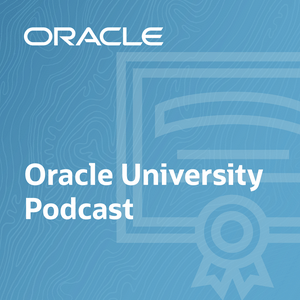
Get the free radio.net app
- Stations and podcasts to bookmark
- Stream via Wi-Fi or Bluetooth
- Supports Carplay & Android Auto
- Many other app features
Get the free radio.net app
- Stations and podcasts to bookmark
- Stream via Wi-Fi or Bluetooth
- Supports Carplay & Android Auto
- Many other app features


Oracle University Podcast
download the app,
start listening.



